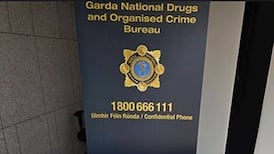The average response time for ambulances to reach life-threatening emergencies has increased by 50 per cent in three years, new figures show.
A patient with a heart attack or other medical emergency is, on average, waiting nine minutes longer for an ambulance, with response times for the most serious 999 calls delayed from 18 minutes in 2019 to 27 minutes last year.
Patients in Cork and Kerry are waiting an extra 13 minutes on average, a 72 per cent decline in service, while those in the southeast are waiting 12 minutes longer, a 57 per cent increase, according to figures from the National Ambulance Service (NAS).
The deterioration in performance is so serious that even reduced targets for responding to non-cardiac or respiratory incidents are not being met.
RM Block
The target was that 80 per cent of all life-threatening callouts should be responded to in under 20 minutes. However, the service said only two-thirds of cardiac arrests were handled in this timeframe last December.
For non-cardiac or respiratory emergencies, the target was reduced to 50 per cent last year. Yet in December, less than one-third of such callouts were responded to within the target time, and only one in five in Dublin.
The average turnaround time for ambulances offloading patients in hospital has also worsened, from 29 minutes in 2020 to 39 minutes last year, according to figures obtained by Sinn Féin health spokesman David Cullinane. One in six transports last year had a turnaround time of more than one hour.
The service says it urgently needs to recruit additional staff and has plans to double its workforce to more than 4,000 by 2026. Dublin Fire Brigade, which provides ambulance services in much of the capital, says the demand for ambulances is “far in excess” of capacity.
“At this rate the NAS will fall far short of its requirements in 2024 and 2026 and its performance will continue to deteriorate,” Mr Cullinane said.
“We need to more than double the number of paramedics in training and engage with qualified paramedics who are no longer working for the ambulance service to try and bring them back.
“Paramedics are burned out and exhausted, which makes retention critical to meeting these targets, but retention plans will fail unless there are more paramedics to share the burden.”
Sinn Féin is this week moving a private members’ motion in the Dáil calling on the Government to publish a multi-annual plan for meeting needs for additional staffing and vehicles in the ambulance service.
The party claims the Government has failed to support staff and has “chosen” not to provide the necessary funding for the ambulance service “which in turn is leading to burnout of frontline paramedics and has increased risk for patients due to increased response times”.
The motion also calls for a review of the spatial coverage of the ambulance fleet to reduce reliance on staff doing overtime and working long shifts and to help reach response time targets.

















